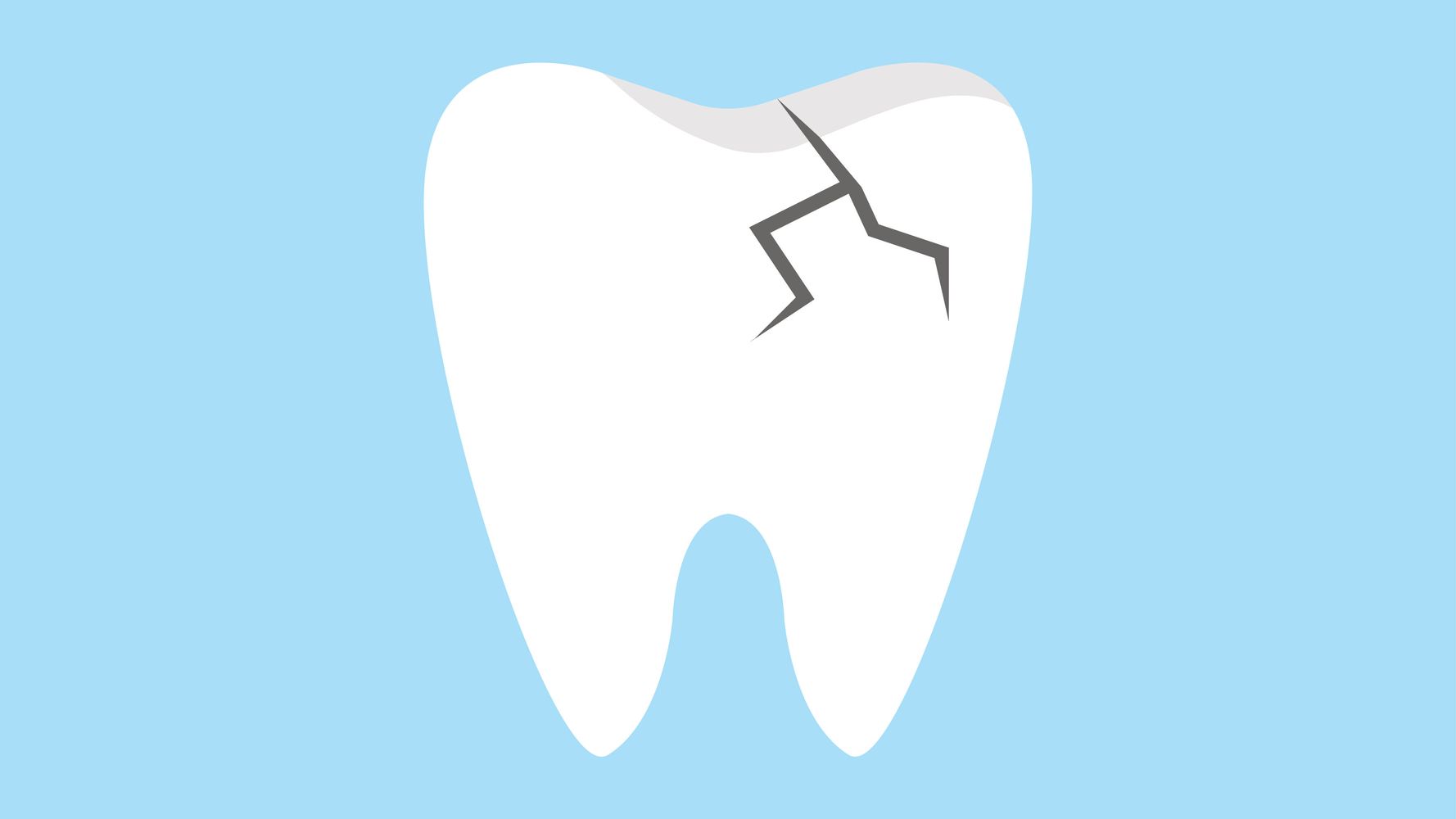COVID-19 was once thought to mainly affect the lungs, but throughout the pandemic we’ve learned that’s certainly not the case.
Everyone reacts to the coronavirus in different ways: Some people lose their taste and smell, while others experience sky-high fevers, difficulty breathing or weeks of fatigue. There have also been reports of “COVID toes,” hair loss, blood clots and rashes.
Now, more anecdotal reports are surfacing that the infection may have an impact on oral health. After being diagnosed with and recovering from COVID-19, people are sharing stories of how their teeth or gums weakened, with some saying that their teeth became discolored, broke or fell out.
It’s too soon to confirm a clear, well-established link between the coronavirus and oral health, and doctors will need much more data to figure out precisely what’s happening. But some health experts suspect that the coronavirus may directly infect the blood vessels and disrupt blood flow to our gums, teeth and tongue, causing pain and decay.
Back in February, Diana Berrent’s 12-year-old son, Spencer, became sick with COVID-19. His sinuses clogged up, and he developed a headache along with prolonged fatigue. Spencer eventually recovered from the disease and figured his bout with the coronavirus was over, Berrent said. Then, earlier this month, his bottom (adult) teeth started to feel loose, and eventually, one fell out. The odd thing: When the tooth came out, there was no blood at all.
A quick search on Survivor Corps ― a group founded by Berrent dedicated to COVID-19 patients ― will pull up hundreds of personal stories from COVID-19 survivors who have experienced similar issues. There are reports of teeth that have turned gray or become loose, and gums that are painful and sensitive. Much of the time, these patients have no other known oral issues and are seemingly healthy.
More than 116,000 people have joined the Survivor Corps community. Many of its members share their symptoms as they manifest, which means the group has been able to identify some of the odder coronavirus-related symptoms — such as COVID toes, hair loss and now dental decay — quickly, Berrent said. Sometimes, they’re are even shared in the group before they hit the media or research papers.
“We see things in real time,” Berrent told HuffPost, noting that tons of survivors have come forward with dental issues over the last several weeks.
It’s possible that these dental-related symptoms are going underrecognized and being attributed to other causes, just as joint pain and hair loss once were.
So what could be the explanation? Experts have a few theories:
Oral side effects may be a blood flow issue
William Li, a vascular biologist and medical director of the Angiogenesis Foundation, suspects that the dental deterioration in COVID-19 patients could ultimately be a problem with blood flow.
The coronavirus is already known to infect and attacks blood vessels, which can lead to clots and clogged blood flow. If blood can’t readily reach our organs, damage can occur. That’s why doctors have seen all sorts of coronavirus-related complications within the heart, lungs, intestine, brain and kidneys.
Turns out the same may be true with the oral cavity.
“Your jaw is very richly fed with blood vessels,” Li told HuffPost. “We’ve got lots of teeth, sensitive gums, we’ve got a tongue and taste buds that need to be nurtured.”
The gums are “extremely vascularized,” and inside the tooth is the dental pulp, or the “living, breathing part of the tooth” that is packed with blood vessels along with nerves, Li said.
The underlying vascular damage that COVID-19 wreaks on the body can persist even after the disease is gone, and over time it can cause dental flare-ups. In Spencer’s case, the fact that there was no blood when the tooth fell out suggests blood flow was obstructed, which may have caused his tooth to deteriorate, Li said.
The mouth could harbor the virus
What’s also interesting is that when the coronavirus infects the body, it latches onto a part of our cells called the ACE2 receptors. These receptors are rich in certain areas of the body, including the lungs (hence the respiratory damage COVID-19 inflicts). The mouth, it turns out, is also flush with ACE2 receptors.
“The fact that it has ACE2 receptors means there is a theoretical, biological pathway by which the virus could have a direct effect [on the mouth],” Eric Cioe-Pena, director of global health at Northwell Health in New York, told HuffPost.
In fact, earlier research shows that because of the high prevalence of these receptors in the mouth, the oral cavity could be a great environment for the coronavirus to camp out and replicate.
“There’s an intimate connection between teeth and the rest of our body.”
– Eric Cioe-Pena, director of global health at Northwell Health
Other viruses also directly infect the oral cavity, such as the Coxsackievirus virus behind hand, foot and mouth disease and the herpes virus, Cioe-Pena said.
There’s also HIV, which can cause oral pain, bone loss around the teeth and dental decay due to immunodeficiency. In addition, many other viruses can affect the immune system in such a way that bacteria can build up in the mouth and lead to a host of other issues.
“There’s an intimate connection between teeth and the rest of our body,” Cioe-Pena said.
More data will tell us what’s really going on with COVID-19 and our teeth
It’s crucial to recognize that more research needs to be done before experts can make any solid conclusions about how, why and if COVID-19 might damage people’s teeth.
“We don’t have enough data yet to know whether this is purely a temporal association or causation. The short answer is: It’s too early to tell,” Cioe-Pena said.
Doctors are just starting to put together the clues to uncover the full magnitude of COVID-19. This is still a new disease, and we have yet to understand all of its effects.
“COVID is like a thousand-piece puzzle,” Li said. “You can start seeing some of the big pieces of it put together, but there are so many pieces in different corners, and this dental piece is sort of the new area of the puzzle that people are starting to work on.”
Experts are still learning about COVID-19. The information in this story is what was known or available as of publication, but guidance can change as scientists discover more about the virus. Please check the Centers for Disease Control and Prevention for the most updated recommendations.


